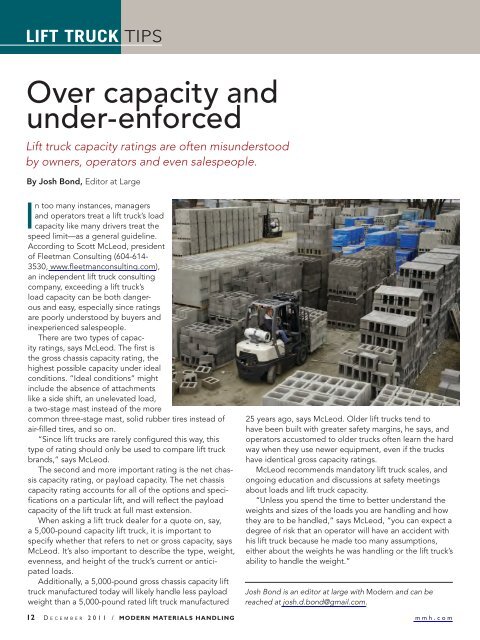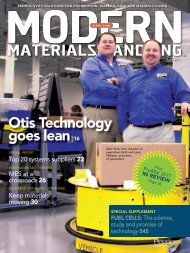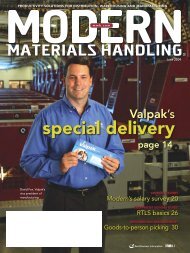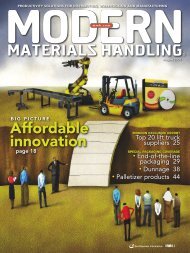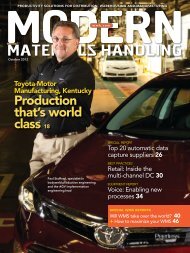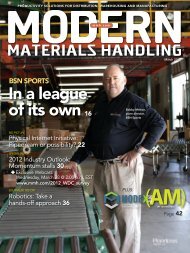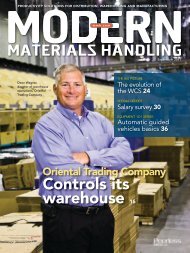Modern Materials Handling - December 2011
Modern Materials Handling - December 2011
Modern Materials Handling - December 2011
Create successful ePaper yourself
Turn your PDF publications into a flip-book with our unique Google optimized e-Paper software.
lift truck TIPSOver capacity andunder-enforcedLift truck capacity ratings are often misunderstoodby owners, operators and even salespeople.By Josh Bond, Editor at LargeIn too many instances, managersand operators treat a lift truck’s loadcapacity like many drivers treat thespeed limit—as a general guideline.According to Scott McLeod, presidentof Fleetman Consulting (604-614-3530, www.fleetmanconsulting.com),an independent lift truck consultingcompany, exceeding a lift truck’sload capacity can be both dangerousand easy, especially since ratingsare poorly understood by buyers andinexperienced salespeople.There are two types of capacityratings, says McLeod. The first isthe gross chassis capacity rating, thehighest possible capacity under idealconditions. “Ideal conditions” mightinclude the absence of attachmentslike a side shift, an unelevated load,a two-stage mast instead of the morecommon three-stage mast, solid rubber tires instead ofair-filled tires, and so on.“Since lift trucks are rarely configured this way, thistype of rating should only be used to compare lift truckbrands,” says McLeod.The second and more important rating is the net chassiscapacity rating, or payload capacity. The net chassiscapacity rating accounts for all of the options and specificationson a particular lift, and will reflect the payloadcapacity of the lift truck at full mast extension.When asking a lift truck dealer for a quote on, say,a 5,000-pound capacity lift truck, it is important tospecify whether that refers to net or gross capacity, saysMcLeod. It’s also important to describe the type, weight,evenness, and height of the truck’s current or anticipatedloads.Additionally, a 5,000-pound gross chassis capacity lifttruck manufactured today will likely handle less payloadweight than a 5,000-pound rated lift truck manufactured25 years ago, says McLeod. Older lift trucks tend tohave been built with greater safety margins, he says, andoperators accustomed to older trucks often learn the hardway when they use newer equipment, even if the truckshave identical gross capacity ratings.McLeod recommends mandatory lift truck scales, andongoing education and discussions at safety meetingsabout loads and lift truck capacity.“Unless you spend the time to better understand theweights and sizes of the loads you are handling and howthey are to be handled,” says McLeod, “you can expect adegree of risk that an operator will have an accident withhis lift truck because he made too many assumptions,either about the weights he was handling or the lift truck’sability to handle the weight.”Josh Bond is an editor at large with <strong>Modern</strong> and can bereached at josh.d.bond@gmail.com.12 D e c e m b e r 2 0 1 1 / <strong>Modern</strong> <strong>Materials</strong> <strong>Handling</strong> mmh.com


